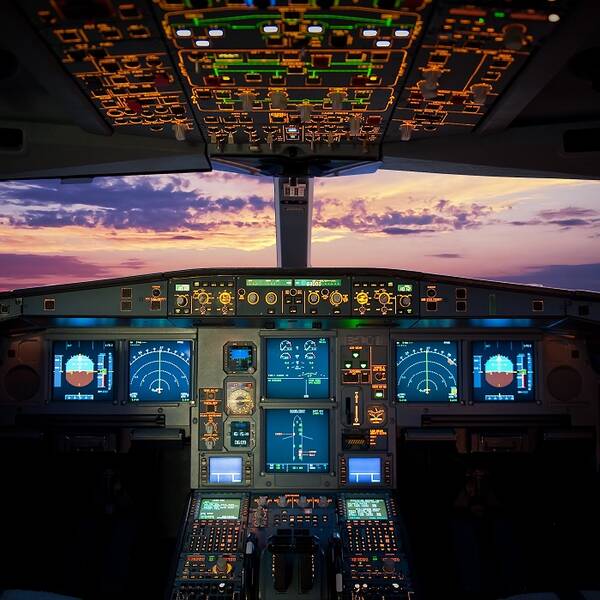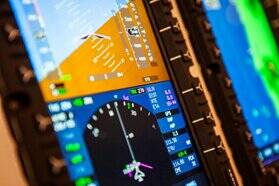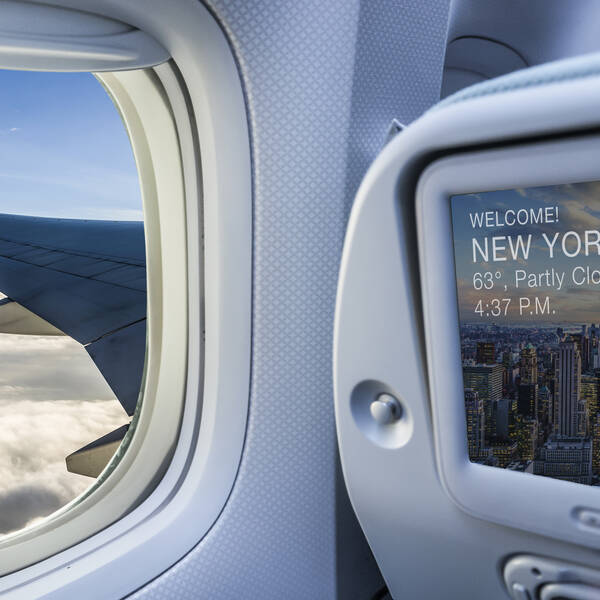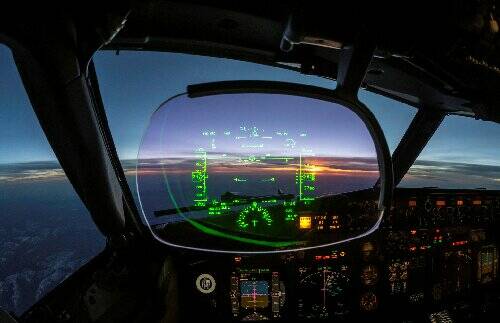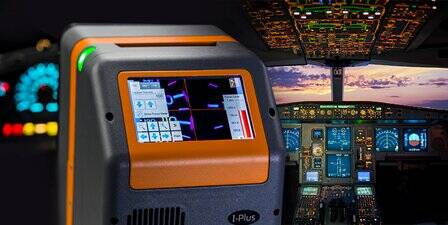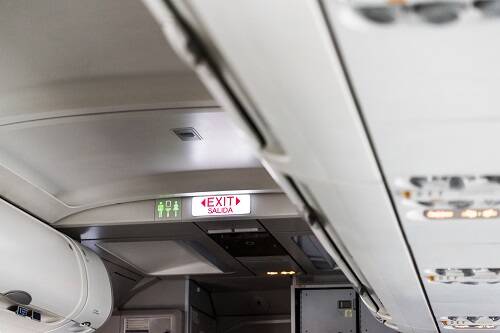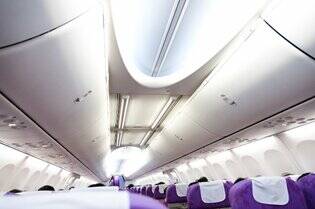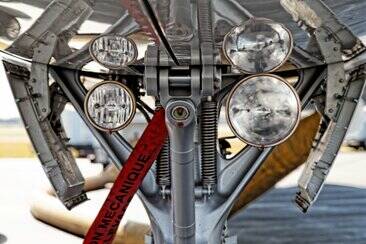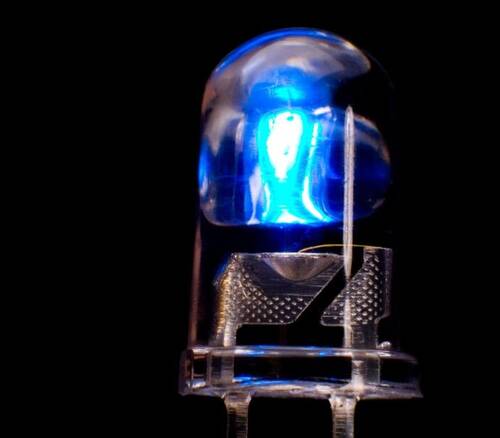On an aircraft, critical safety and operational information is relayed to pilots and passengers primarily via artificial light. Integrated displays, cockpit controls, indicators, illuminated signs, navigation lights, and other electronics provide the necessary data to safely and accurately guide an aircraft to its destination and ensure the comfort of its occupants. These illuminated components must be thoroughly tested and measured to comply with exacting industry standards and meet quality parameters. Manufacturers of aerospace and defense technologies must ensure absolute quality of new equipment used in the world’s most highly-regulated machines.
Radiant’s light and color measurement solutions, based on ProMetric® Imaging Colorimeters and Photometers, provide the high precision required for R&D, while meeting the speed and analysis requirements of production-level testing. Calibrated for NIST (National Institute of Standards and Technology)-traceable measurements, Radiant's imaging systems provide the most accurate characterization of light sources and displays, capturing precise spatial measurements of luminance, chromaticity (CIE or L*a*b color space coordinates), and contrast. Radiant cameras feature a tristimulus optical filter system scientifically engineered to simulate human visual sensitivity to brightness and color, which enables accurate evaluations of illuminated components that reflect an operator’s or passenger’s perception—whether a display, character, sign, or ambient light distribution pattern—ensuring all illuminated components meet requirements for safety and operability.
Embedded Displays
Testing LCDs, LEDs, OLEDs, and HUDs
Radiant is the leading provider of display test solutions, with thousands of systems deployed worldwide, testing millions of flat panel displays (FPDs), smart devices, touchscreens, infotainment and navigation displays, and more. Radiant cameras evaluate LCD, LED, and OLED displays and display components, including backlight units (BLUs) and LCD modules, as well as see-through displays like augmented reality (AR) and head-up displays (HUDs), for performance in a range of ambient light environments, from day to night, in all weather conditions.
Radiant display tests are performed using a ProMetric Imaging Colorimeter or Photometer paired with ProMetric or TrueTest™ Software. Tests include ANSI (American National Standards Institute) brightness, ANSI color uniformity, light or color mura (blemish) detection, light leakage, pixel and line defect inspection, image sticking, and view angle performance testing.
Using automated visual inspection software, defects are weighted and evaluated based on their severity and scope, which correlate to either permissible or unacceptable imperfections as perceived by a human observer. Display tests support standardized measurement practices such as those recommended by SAE International for displays, HUDs, and illuminated components (for example, ARP4260B, which contains colorimetric and photometric measurement guidelines for airborne electronic flat panel display systems).
As an option, Radiant measurement systems may employ an image analysis algorithm specifically for computing JND (“Just Noticeable Differences”) in display uniformity, used to identify display mura. The JND detection algorithm is offered in the TrueMURA™ plug-in for TrueTest Software, and is based on U.S. patent 7,783,130, “Spatial Standard Observer” technology, licensed by Radiant from NASA.
Related Links:
See-Through Displays and HUDs
Head-up displays (HUDs) greatly enhance a pilot’s situational awareness of trajectory and external factors. The usefulness of an HUD depends entirely on the quality of projected illumination. Objects in a display must be easily viewable in any flight condition, and adequate brightness and color must be ensured for the life of the display system.
Radiant is the leading provider of near-eye display (NED) test systems in consumer electronics, and for HUDs in automotive manufacturing, Our ProMetric® systems have been applied in various testing environments to measure see-through display technologies from LED to OLED to waveguide using a range of projection methods.
Radiant cameras feature electronically-controlled lenses and Radiant’s Smart Control™ functionality for precise, adaptive adjustment of focus and aperture settings. Combined, these technologies enable the fastest and most accurate location of illuminated objects projected on an infinite plane, such as the symbols displayed in HUDs and augmented reality displays. With minimal adjustment, our imaging colorimeters map points of interest to projected symbols and provide luminance and color measurements while recording object distance, size, and scale at any working distance to ensure accurate projection.
Related Links:
Backlit Avionics
Illuminated Controls, Information Panels, and Signs
Digital avionics continue to replace analog components in the cockpit and controls in the cabin, making light and color accuracy evaluation increasingly critical. Indicators, gauges, controls, instrument panels, and illuminated signs provide vital performance, instructional, and safety information, and many backlit components must comply with standard luminance and color thresholds for adequate intensity and distribution under all lighting conditions.
Designed specifically for backlit symbol measurement, Radiant measurement systems feature a powerful software tool called Auto-POI (or Automatic Points of Interest), which automatically selects backlit symbols based on color and luminance values, regardless of symbol shape, size, location, or position. This greatly simplifies the process of evaluating like-symbols across an instrument panel for uniform luminance (user-specified minimum Lv percentage) and chromaticity (user-specified CIE cx, cy values), and enables accurate measurement for dynamic applications where panels may move, shift, or change during inspection. Calculations may be run on one or many characters simultaneously to ensure inter- and intra-symbol uniformity in a single measurement.
Radiant’s light and color measurement systems are also used to ensure color and luminance uniformity in backlit symbols and signs in the cabin, supporting SAE recommendations regarding color and brightness of signs and ambient lighting. Values captured by the software include average luminance across symbols, minimum and maximum luminance points, color values, and dominant wavelengths.
Characteristics such as luminance, contrast, character shape and completeness (no exclusions of inclusions), position/orientation, and validation (is it the correct letter/number) can all be assessed simultaneously from a single image using our ProMetric imaging photometers and colorimeters with purpose-built software such as Vision Inspection Pack (VIP™) and Aerospace Character Evaluation (ACE) with integrated OCR. Robust quantitative analysis and reporting enable customers in regulated industries such as automotive and aerospace to capture the data they need to ensure compliance with requirements.
Related Links:
Interior Lighting
Cockpit and Cabin Lighting
Radiant light measurement systems enable manufacturers to meet general recommendations for interior lighting in cockpits, cabins, galleys, lavatories, ceilings, aisles, walls, and overhead, ensuring adequate illumination for all in-flight functions.
Interior lighting must provide adequate illuminance relative to the installation distance or angle in an aircraft to ensure specifications are met. Light that is too bright, or poorly-directed, may not meet specifications for aircraft operation. Uniformity in illuminance and color is also important for both function and quality perception. Luminous intensity distribution patterns mapped by Radiant ProMetric imaging systems ensure appropriate brightness and distribution patterns in design, manufacture, and installation of lighting systems, correlating light source characterization data from R&D to production.
Quality control for LED headlamps, taillights, and accessory light strips can be readily addressed with a ProMetric Imaging Colorimeter and ProMetric Software. You can determine luminous intensity distribution, measure uniformity of luminance and color, and detect failed LEDs in the cluster . ProMetric Software allows you to overlay ROIs (Regions of Interest) on the image and determine individual LED performance.
Related Links:
Exterior Lighting
Navigation, Landing, Flood, and other External Lights
For exterior lighting such as navigation, anti-collision, taxi, landing, flood, wheel well, logo, and other lights and illuminated areas, Radiant systems ensure illuminance distribution accuracy and color compliance in accordance with SAE regulation test points, in addition to verifying custom test points.
Radiant ProMetric cameras deliver comprehensive data on light sources from HIDs to LEDs to help you design external light source configurations. Design engineers can easily generate standard output files for complete near-field modeling, including IES, EULUMDAT (LDT), and Radiant Source Model™ (RSM) files. Systems also measure luminous intensity distribution patterns and limits and illumination distribution to match requirements for aerospace lighting standards.
Small Light Sources
Light Source Characterization
Radiant systems measure small, single light sources (LEDs or HID bulbs) to characterize their intensity, illuminance, luminance, and chromaticity. Radiant cameras characterize the near-field distribution of each light source to model the light’s appearance at all view angles. Used in optical design applications, ProMetric Imaging Colorimeters paired with a precision goniometric system (SIG-400 Source Imaging Goniometer®) will output a Radiant Source Model (RSM) that can be converted to a ray sets in Radiant ProSource® Software. These ray sets are supported in most common optical design packages (such as ASAP®, FRED®, LightTools®, LucidShape®, Photopia™, IES TM-25, Opticad®, OSLO®, SimuLux®, SPEOS®, TracePro®, and OpticStudio™ (ZEMAX), as well as general file formats) to streamline optical design.


